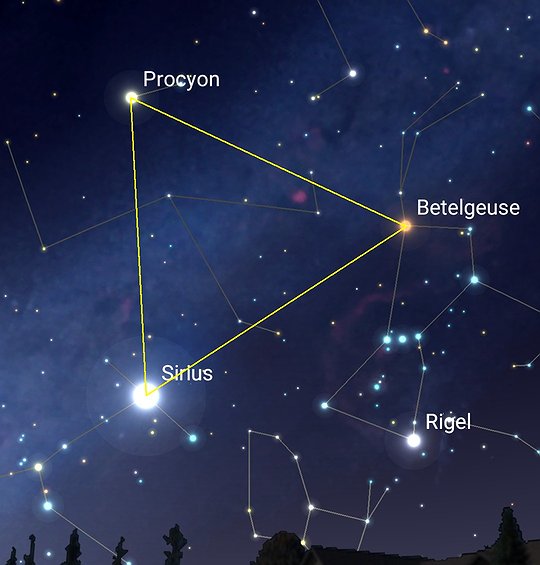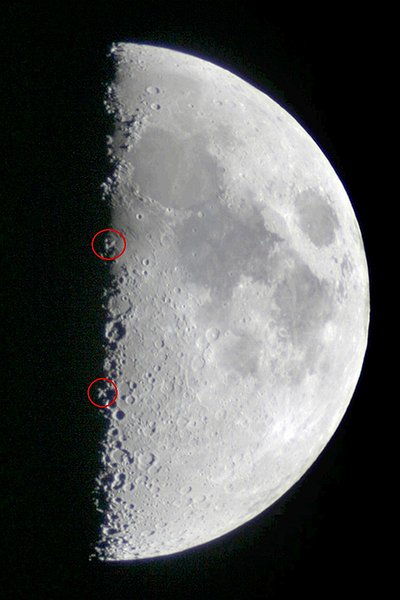Best night sky events for April
Monday, April 8 — New moon and total solar eclipse (midday)
The new moon of Monday, April 8, will generate another great American total solar eclipse, following the previous one Aug. 21, 2017. (Image credit: Chris Vaughan/Starry Night)
INSERT IMAGE SOLAR ECLIPSE
An image of Earth's western hemisphere from afar in space. The moon rests in front of the earth, its shadow cast on lower North America.
The new moon of Monday, April 8, 2024 will generate another great American total solar eclipse, following the previous one Aug. 21, 2017. Here in Cd'A, this eclipse will occur between 10:40 a.m. to 12:33 p.m. Maximum eclipse will happen at 11:35 a.m. and 27.5% of the sun will be covered. You HAVE to use eclipse glasses to view this event.
Wednesday, April 10 — Crescent moon joins Jupiter (after sunset)
On Wednesday, April 10, the young crescent moon will be situated to the upper left of the bright planet Jupiter in the western sky. This happens as the sky begins to darken and then shine above the rooftops until about 9:30 p.m. local time. Very close by is the Pleiades star cluster aka Messier 45. Earlier, watch for Earthshine on the moon. Sometimes called the Ashen Glow, this phenomenon is visible within a day or two of new moon, when sunlight reflected off Earth and back toward the moon slightly brightens the unlit portion of the moon’s Earth-facing hemisphere.
Thursday, April 11 — Moon with the Jewels of Taurus (evening)
After appearing near Jupiter the day before, on Thursday, April 11, the waxing crescent moon will move higher in the western sky to shine above and between the stars of Taurus in early evening.
Friday, April 12 — The Winter Triangle (evening)
The lower part of the south and western sky on early April evenings is dominated by the three stars of the Winter Triangle.
(Image credit: John Taylor/Sky Safari 6) INSERT IMAGE WINTER TRIANGLE
The lower part of the south and western sky on early April evenings is dominated by the three stars of the Winter Triangle. The prominent asterism, visible even while the waxing crescent moon is shining nearby on Friday, April 12, is anchored on the bottom by Sirius in Canis Major, the brightest star in the night sky. Above Sirius (to the NNE) shines the white star Procyon in Canis Minor. The third, northwestern vertex is occupied by the reddish star Betelgeuse in Orion.
The Winter Triangle first appears in late evening during November. By the end of April, it will be disappearing into the western post-sunset twilight.
Monday, April 15 — First quarter moon (at 12:13 PDT)
The moon will complete the first quarter of its orbit around earth on Monday, April 15, at 12:13 p.m. PDT.
Monday, April 15 — First quarter moon (at 8 p.m.) displays the Lunar “X” and “V” phenomenon
They are optical features on the moon, visible through small telescopes (at 50x). So, when the moon’s terminator — or line between light and dark on the moon — is located in just the right place, you can see a letter X and a letter V on the moon’s surface. The Lunar X and V are great examples of how lighting and topography can combine on our moon to produce a pattern that seems familiar to the human eye.
In reality, the illusion of the Lunar X is created by sunlight falling on the rims/ridges between the craters La Caille, Blanchini and Purbach. The V is caused by the sun’s light illuminating crater Ukert, along with several smaller craters.
Photo Courtesy of John Taylor (Image credit: John Taylor/Sky Safari 6) INSERT IMAGE (Lunar X and V.jpg)
Sunday, April 21 — Lyrids meteor shower peak (overnight)
The annual Lyrids meteor shower, derived from particles dropped by comet C/1861 G1 (Thatcher), runs from April 16 to 29. It will peak in intensity at approximately midnight Monday, April 22, but meteors should be seen while the shower’s radiant point near the bright star Vega in Lyra rises in the eastern sky late Sunday night, April 21. The Lyrids can produce up to 15-20 meteors per hour at the peak, with occasional fireballs, but a full moon will spoil the shower this year. For best results, try to view the meteors from a safe location that has a wide-open sky free of light pollution. Hide the bright moon behind a building or tree and just look up.
Monday, April 22 — Bright moon passes Spica (all night)
In the eastern sky commencing after dusk Monday, April 22, the nearly full moon will be shining very close to Virgo’s brightest star, Spica, which is 263 light-years away from our sun.
Tuesday, April 23 — Full Pink Moon (at 4:49 PDT)
The moon will officially reach its full phase at 4:49 p.m. PDT on Tuesday, April 23. April’s full moon, commonly called the Pink Moon, Sprouting Grass Moon, Egg Moon or Fish Moon, always shines in or near the stars of Virgo or Libra.
Thursday, April 25 — Gibbous moon approaches Antares (late night)
Once the bright, waning gibbous moon clears the treetops in the east around midnight local time Thursday, April 25, it will be shining almost a fist’s diameter to the upper right of the very bright reddish star Antares, which marks the scorpion’s heart.
Friday, April 26 — The Great Bear (Ursa Major/Big Dipper) 9 p.m.
Look straight up because the large and bright constellation Ursa Major, the Great Bear is at the zenith. Everyone should be familiar with the Big Dipper, but did you know that if you take the farthest two stars that make up the and (in this case) extend an imaginary line downward, it will intersect Polaris, the north star.
(Image credit: John Taylor/SkyTechX) INSERT IMAGE Big Dipper
• • •
John Taylor is an amateur astronomer who lives in Hayden.







